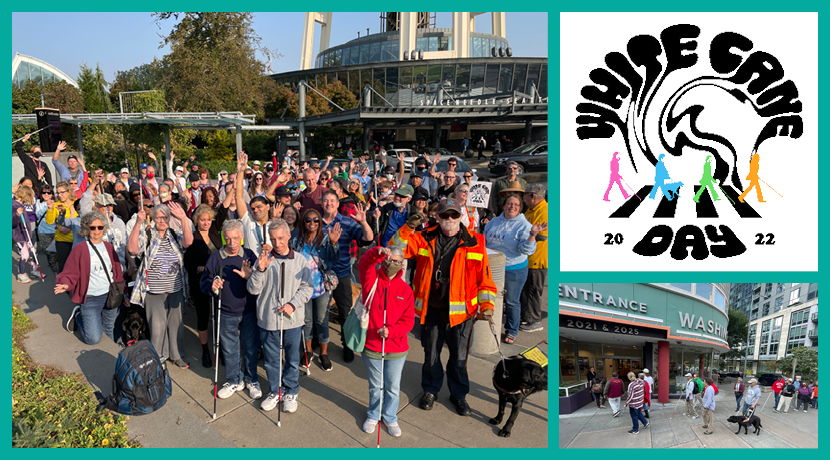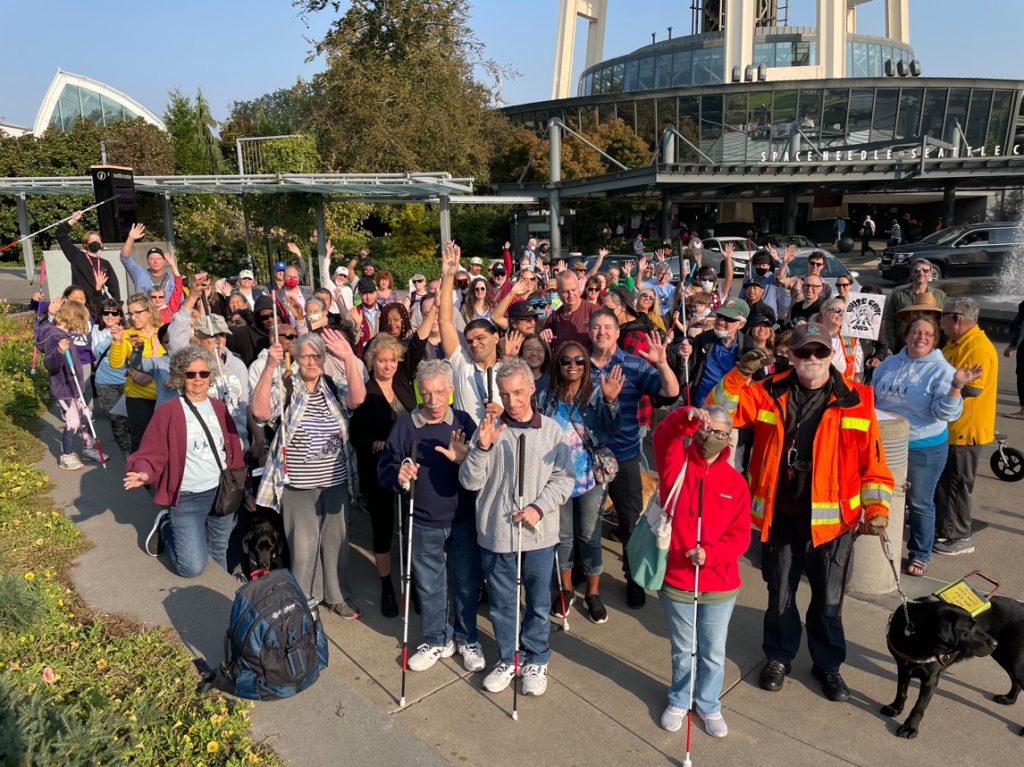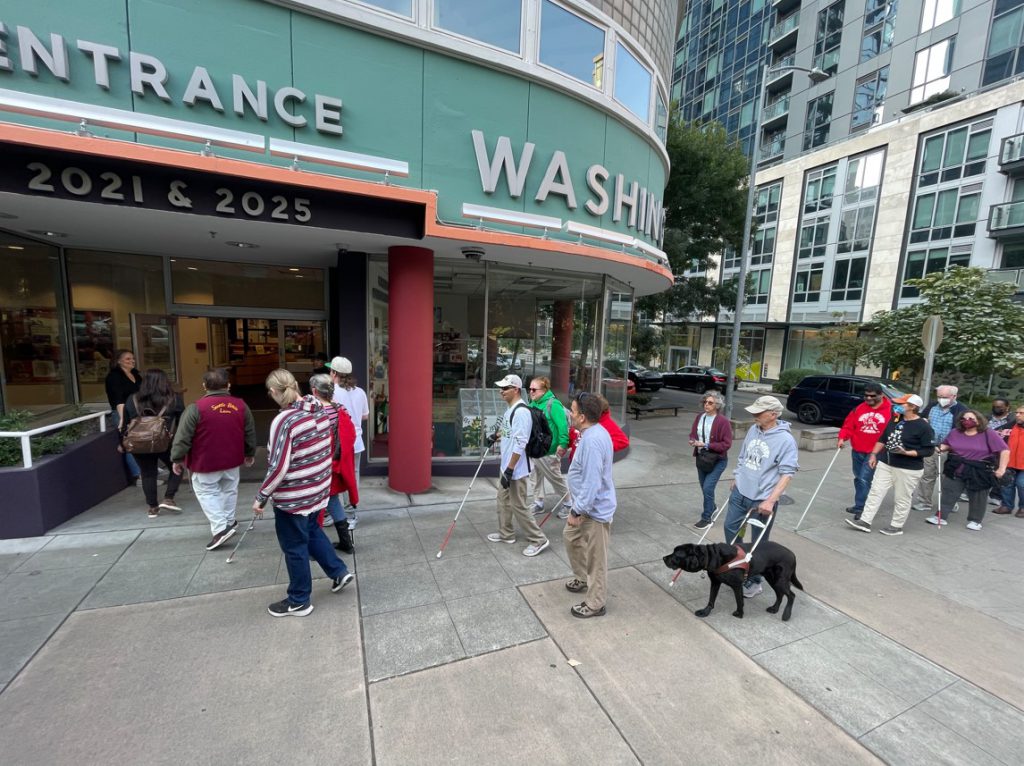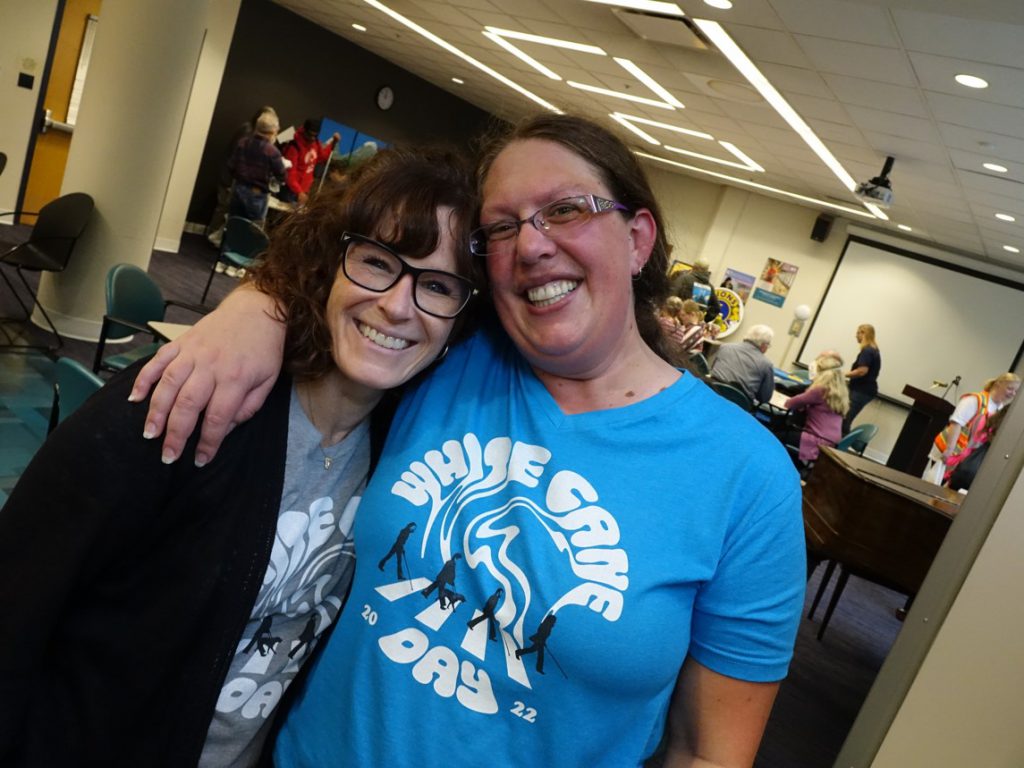
SEATTLEITES WALK FOR WHITE CANE DAY
On Saturday, Oct. 15, nearly a hundred people who are blind and visually impaired and their families and friends gathered in Seattle to celebrate White Cane Day with a one-mile walk.
The White Cane Day Walk 2022, which began at the south base of the Seattle Space Needle and ended at the Washington Talking Book & Braille Library (WTBBL), was a celebration for people who are blind and visually impaired, many of whom use a “white cane.” White canes not only help drivers and other pedestrians see them, they also enable users to avoid obstacles, find steps and curbs, and much more.
Through the years the white cane has become a symbol of independence that empowers the blind and visually impaired to explore their environment. White Cane Day, which is observed around the world, celebrates this empowerment.


At the end of the walk, WTBBL hosted a reception for participants and library patrons that included vendors providing information and services such as cane repair, wayfinding apps, human guides, and more. Vendors included the Washington State Department of Services for the Blind, DeafBlind Service Center, Lighthouse for the Blind, National Federation of the Blind, and Washington Council of the Blind.
In addition, You Cane Give sponsored a cane drive for people who wished to donate their old, gently used canes for people in need.

“White Cane Day is a unique opportunity for us to shine a light on the independence and freedom white canes give to people who are blind or visually impaired,” said Danielle Miller, WTBBL Director. “WTBBL is grateful to have participated in the White Cane Day Walk and hosted the reception, as libraries are places that empower people and engage communities.”
“White Cane Day offers the blindness community a chance to get together and have fun,” said Alice Klein, Health and Wellness Instructor, Washington State Department of Services for the Blind. “It’s not every day you see a large group of cane users walking down the street. It is my hope that seeing so many cane users will inspire the public to explore their perceptions of what blind people can accomplish.”

What is White Cane Day?
In 1964 a joint resolution of Congress, HR 753, was signed into law authorizing the President of the United States to proclaim Oct. 15 of each year as “White Cane Safety Day.” President Lyndon B. Johnson signed the first White Cane Safety Day proclamation within hours of the joint resolution’s passage. Through the years the focus of White Cane Safety Day has shifted toward greater independence and equality. In 2011, White Cane Day was also named Blind Americans Equality Day by President Barack Obama.
How white canes work
People who are blind or visually impaired use their senses of hearing and touch to explore and understand the world around them. The white cane enables people to avoid obstacles, find steps and curbs, locate and step over cracks or uneven places in the sidewalk, find doorways, get into cars and buses, and more.

What to do when you see someone using a white cane
When you see blind people using a white cane, remember that the cane is their tool to safely and independently navigate their environment. There is no need to shout warnings or try to physically steer them so their cane won’t bump into things. Remember that they are using their cane to explore what is around them. If they need any help or direction, they will ask.

About the Washington Talking Book & Braille Library
The Washington Talking Book & Braille Library (WTBBL), one of 94 National Library Service for the Blind and Print Disabled-affiliated libraries nationwide, has been providing services for people unable to read standard print since 1931. Watch this video to learn more, or contact WTBBL at 800-542-0866 or [email protected]. WTBBL is a program of Washington State Library, a division of the Office of the Secretary of State.